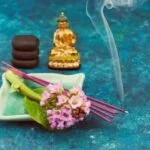Are you wondering how to purify aromatherapy essential oils for maximum benefits? Aromatherapy essential oils have been used for centuries to promote relaxation, improve mood, and provide other health benefits. These oils are extracted from plants and contain the essence of the plant’s fragrance and healing properties.
In this article, we will explore the importance of purifying aromatherapy essential oils and different methods for doing so. We will also provide a step-by-step guide on how to purify these oils, tips for maintaining their purity, common mistakes to avoid, and best practices for storing them.
Aromatherapy essential oils are highly concentrated extracts from plants that have been used in traditional medicine and holistic healing practices for their therapeutic properties. They are known for their ability to promote relaxation, reduce stress, improve sleep quality, alleviate pain, enhance mood, and boost overall well-being. Whether you use them in a diffuser, apply them topically, or add them to bath water or massage oil, these oils can have powerful effects on both the mind and body.
Purifying aromatherapy essential oils is crucial for ensuring their potency and effectiveness. By removing impurities such as pesticides, chemicals, or debris from the extraction process, you can maximize the therapeutic benefits of these oils.
In the following sections of this article, we will delve into different methods for purification and provide a comprehensive guide on how to do it effectively at home. Stay tuned for valuable insights on choosing the right equipment for purification, maintaining purity, avoiding common mistakes, and storing purified oils properly.
The Importance of Purifying Aromatherapy Essential Oils
Aromatherapy essential oils are known for their various therapeutic benefits, including stress relief, improved sleep, and mood enhancement. These oils are extracted from plants and contain concentrated aromatic compounds that can have a powerful impact on the mind and body.
However, to fully enjoy these benefits, it is crucial to ensure that the essential oils are pure and free from any impurities. This section will delve into the importance of purifying aromatherapy essential oils and the impact it has on their effectiveness.
Benefits of Purifying Aromatherapy Essential Oils
Purifying aromatherapy essential oils is essential for preserving their therapeutic properties. When oils are not properly purified, they may contain impurities or contaminants that could compromise their purity and potency. These impurities can diminish the aroma and therapeutic effects of the oils, leading to a less effective product. By purifying essential oils, you not only enhance their fragrance but also ensure that they deliver maximum therapeutic benefits.
Impact on Health and Well-Being
Using unpurified aromatherapy essential oils can potentially have negative effects on health and well-being. Impure oils may cause skin irritation or allergic reactions when applied topically, while inhaling contaminated oils can lead to respiratory issues. Therefore, it is important to purify essential oils before use to avoid any adverse effects on one’s health. Whether using essential oils for aromatherapy, massage therapy, or skincare, ensuring their purity through proper purification methods is crucial for promoting overall wellness.
Enhancing Aromatherapy Practices
Purifying aromatherapy essential oils is also fundamental in maintaining the integrity of aromatherapy practices. High-quality, pure essential oils are vital for achieving desired effects during aromatherapy sessions. By understanding how to purify aromatherapy essential oils effectively, practitioners can elevate their practice by using top-grade products that deliver optimal results for relaxation, stress reduction, and emotional balance. Understanding the importance of purifying aromatherapy essential oils contributes to promoting a safe and effective approach to holistic wellness through aromatherapy practices.
Different Methods for Purifying Aromatherapy Essential Oils
There are several methods for purifying aromatherapy essential oils, each with its own benefits and drawbacks. It’s important to choose the method that best suits your needs and the type of essential oil you are working with. Here are some of the most common methods for purifying aromatherapy essential oils:
Distillation
Distillation is one of the most popular methods for purifying essential oils. This process involves heating the oil to a specific temperature, which causes it to vaporize. The vapor is then collected and condensed back into a liquid, resulting in a purified essential oil.
Filtration
Filtration is another effective method for purifying essential oils. This process involves passing the oil through a filter, which effectively removes any impurities or contaminants. Filtration can be done using various types of filters, including paper filters, cloth filters, and even activated charcoal.
Carbon Dioxide Extraction
Carbon dioxide extraction is a more advanced method for purifying essential oils. This process involves using carbon dioxide under high pressure to extract the oil from the plant material. The result is a highly concentrated and pure essential oil.
These are just a few of the many methods that can be used to purify aromatherapy essential oils. Each method has its own advantages and disadvantages, so it’s important to carefully consider which one is best for your specific needs. In the next section, we will provide a step-by-step guide on how to purify aromatherapy essential oils using these different methods.
Step-by-Step Guide on How to Purify Aromatherapy Essential Oils
Purifying aromatherapy essential oils is an essential step in ensuring their potency and effectiveness. When oils are not properly purified, they can contain impurities that reduce their therapeutic benefits and even cause skin irritation or other adverse reactions. In this section, we will provide a step-by-step guide on how to purify aromatherapy essential oils to maintain their purity and quality.
To begin the process of purifying aromatherapy essential oils, it is important to gather the necessary equipment and materials. Here is a list of items you will need:
- A clean glass container
- Distilled water
- Cheesecloth or a fine mesh strainer
- A small funnel
- Activated charcoal or bentonite clay
Once you have gathered all the necessary equipment, follow these steps to purify your aromatherapy essential oils:
- Start by pouring the essential oil into a clean glass container.
- Add a small amount of activated charcoal or bentonite clay to the oil.
- Gently swirl the mixture to ensure that the purifying agent is evenly distributed.
- Cover the container and let it sit for 24 hours.
- After 24 hours, carefully pour the oil through a cheesecloth or fine mesh strainer to remove any impurities.
Following these steps will help you effectively purify your aromatherapy essential oils and ensure their quality and efficacy. It is crucial to note that using proper technique when purifying essential oils can make all the difference in maintaining their purity and reaping their full therapeutic benefits.
As you become familiar with how to purify aromatherapy essential oils, you can then focus on choosing the right equipment for this process as well as learn tips and tricks for maintaining their purity over time.
Choosing the Right Equipment for Purifying Aromatherapy Essential Oils
When it comes to purifying aromatherapy essential oils, choosing the right equipment is crucial in ensuring that the oils are properly purified and maintain their therapeutic properties. The following are some of the essential equipment options for purifying aromatherapy essential oils:
1. Distillation Apparatus: Distillation is a commonly used method for purifying essential oils, and having a distillation apparatus is essential for this process. This equipment typically includes a distillation flask, condenser, and receiving flask, among other components.
2. Filtration Equipment: Filtration is another method for purifying essential oils, and having the right filtration equipment is important. This can include filter paper, Buchner funnels, and vacuum pumps for efficient filtration.
3. Separatory Funnels: Separatory funnels are useful for separating the essential oil from any impurities or unwanted substances during the purification process.
4. Storage Containers: Once the essential oils have been purified, it’s important to store them in proper containers to maintain their purity. Amber glass bottles with tight-fitting caps are often recommended for storing purified essential oils.
By ensuring that you have the right equipment for purifying aromatherapy essential oils, you can effectively remove impurities and maintain the quality and therapeutic properties of the oils.
It’s important to note that when choosing equipment for purifying aromatherapy essential oils, it’s also crucial to consider the quality of the materials used in the equipment. Using high-quality glassware, filtration materials, and storage containers can make a significant difference in the purification process and help maintain the purity of the essential oils. Paying attention to these details can ultimately lead to better results in producing high-quality purified aromatherapy essential oils.
Tips and Tricks for Maintaining the Purity of Aromatherapy Essential Oils
Aromatherapy essential oils are highly concentrated plant extracts that can have a variety of therapeutic benefits, including reducing stress, improving sleep, and providing relief from headaches and migraines. However, in order to fully experience the benefits of these oils, it is important to ensure that they are pure and free from any contaminants or impurities.
The purity of aromatherapy essential oils can affect their aroma, therapeutic properties, and overall effectiveness. In this section, we will discuss some tips and tricks for maintaining the purity of aromatherapy essential oils.
One of the most important tips for maintaining the purity of aromatherapy essential oils is to store them properly. Essential oils should be stored in dark glass bottles in a cool, dry place away from direct sunlight and heat. Exposure to light and heat can cause the oils to degrade and lose their potency. Additionally, make sure to keep the bottle tightly sealed when not in use to prevent oxidation.
Another tip for maintaining purity is to avoid using plastic or rubber droppers or pipettes when handling essential oils. These materials can react with the oils and cause contamination. Instead, use glass droppers or pipettes to dispense the oils.
When using aromatherapy essential oils for different purposes, it is important to keep separate bottles for each oil rather than mixing them together. This helps prevent cross-contamination and ensures that each oil maintains its purity and unique properties. Additionally, be mindful of how you use the oil – always dilute with a carrier oil before applying it directly on skin.
It’s clear that maintaining the purity of aromatherapy essential oils is crucial for experiencing their full therapeutic benefits. By following these tips and tricks for storing, handling, and using essential oils properly, you can ensure that they remain pure and potent over time.
Common Mistakes to Avoid When Purifying Aromatherapy Essential Oils
When it comes to purifying aromatherapy essential oils, there are several common mistakes that should be avoided in order to maintain the purity and quality of the oils. These mistakes can affect the overall effectiveness of the oils and may even cause potential health risks when used for aromatherapy. It’s important to be aware of these mistakes and take the necessary precautions to ensure that your essential oils are properly purified.
One common mistake when purifying aromatherapy essential oils is using low-quality or impure water for dilution. It’s important to use distilled or purified water when diluting essential oils, as tap water or other types of non-purified water can contain impurities that may affect the overall quality of the oil. Using impure water can also introduce bacteria or other contaminants into the oil, which can compromise its purity.
Another common mistake is over-diluting the essential oils during the purification process. While it’s important to dilute essential oils for certain applications, over-dilution can weaken their potency and effectiveness. It’s crucial to follow recommended dilution guidelines and avoid adding too much carrier oil or other dilution agents. This ensures that the essential oils maintain their therapeutic properties and provide maximum benefits during aromatherapy use.
Furthermore, one should never skip the step of properly labeling purified essential oils. Failing to label purified essential oils can lead to confusion and potentially dangerous mix-ups between different types of oils. Proper labeling also includes indicating the date of purification, which is crucial for monitoring shelf life and ensuring that the oil remains safe for use in aromatherapy treatments.
| Common Mistakes | Consequences |
|---|---|
| Using impure water for dilution | Introduce contaminants into the oil |
| Over-diluting essential oils | Weakened potency and reduced effectiveness |
| Omitting proper labeling | Potentially dangerous mix-ups between different types of oils |
The Best Practices for Storing Purified Aromatherapy Essential Oils
In conclusion, learning how to purify aromatherapy essential oils is an essential skill for anyone interested in reaping the full benefits of these natural remedies. By removing impurities and contaminants, you can ensure that your essential oils maintain their effectiveness and potency over time. Whether you choose to use the distillation method, filtration method, or solvent extraction method, the key is to follow the proper guidelines and use high-quality equipment to achieve optimal results.
Once you have successfully purified your aromatherapy essential oils, it’s crucial to store them correctly to preserve their purity and potency. The best practices for storing purified aromatherapy essential oils include keeping them in dark glass bottles away from direct sunlight and extreme temperatures. Additionally, be sure to label each bottle with the name of the essential oil and the date of purification to keep track of their shelf life.
Furthermore, maintaining a clean and organized storage space for your purified aromatherapy essential oils will also contribute to their longevity. By following these best practices for storing purified aromatherapy essential oils, you can enjoy the full benefits of these natural remedies for an extended period. Mastering the art of purifying and storing essential oils will not only enhance your wellness routine but also deepen your appreciation for the power of nature’s healing properties.
Frequently Asked Questions
How Do You Purify Essential Oils?
Essential oils can be purified using a process called distillation, where the oil is boiled and the vapor is condensed back into a liquid. Another method is solvent extraction, where solvents are used to separate the oil from the plant material.
How Do You Make Purification Essential Oils?
Making purification essential oils involves selecting specific oils known for their cleansing properties, such as lemon, tea tree, and eucalyptus. These oils can then be blended together in the desired proportions to create a purification blend that can be used for various purposes.
How Do You Sterilize Essential Oils?
Sterilizing essential oils is not typically necessary since they already possess properties that are antimicrobial and antifungal. However, if there are concerns about contamination, essential oils can be diluted with alcohol or carrier oils to ensure their safety and purity before use.

Are you looking for a natural way to improve your health and wellbeing?
If so, aromatherapy may be the answer for you.





